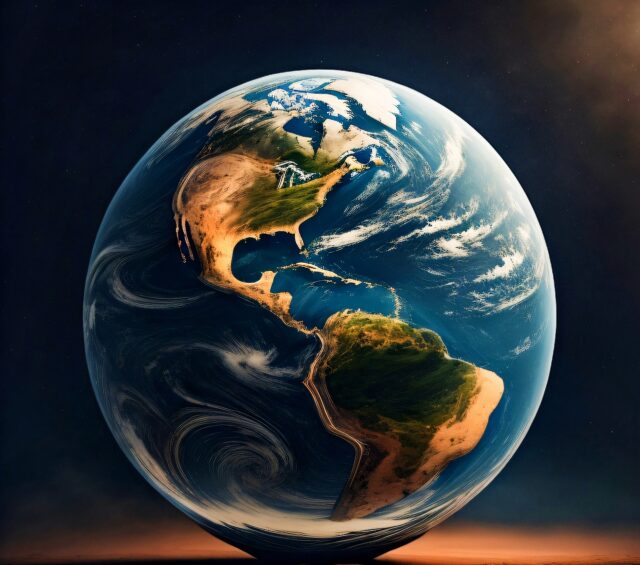As ice caps melt in Greenland and Antarctica, the Earth’s rotation is slowing, according to a new study.
Rising temperatures around the globe have already disturbed the lives of plants and animals and now they are also creating issues for global timekeeping efforts, according to a paper published this week in the journal Nature.
“This is another one of those ‘this has never happened before’ things that we’re seeing from global warming: the idea that this effect is large enough to change the rotation of the entire Earth,” says study co-author Duncan Agnew, a geophysicist at the Scripps Institution of Oceanography at the University of California, San Diego.
The mass of miles long ice sheets covering Greenland and Antarctica apply a strong gravitational pull on the oceans. As the ice melts the water heads to the equator and stays there, which shifts Earth’s normal concentration of mass, reducing that pull and also causing Earth’s rotation to slow down.
The shift matters because most of the world uses Coordinated Universal Time (UTC) to regulate clocks and time. A leap second has occasionally been added to UTC to compensate for the slowing of Earth’s rotation, which is linked to various other factors. For example, the gravitational pull of both the sun and moon create a tidal bulge in the oceans that acts to slow the planet’s rotation.
This didn’t matter until atomic clocks were adopted as the official time standard more than 55 years ago. Those didn’t slow.
“That established two versions of time — astronomical and atomic — and they didn’t match. Astronomical time fell behind atomic time by 2.5 milliseconds every day. That meant the atomic clock would say it’s midnight and to Earth it was midnight a fraction of a second later”, Duncan Agnew said.
Those daily fractions of seconds added up to whole seconds every few years. Starting in 1972, international timekeepers decided to add a “leap second” in June or December for astronomical time to catch up to the atomic time, called Coordinated Universal Time or UTC. Instead of 11:59 and 59 seconds turning to midnight, there would be another second at 11:59 and 60 seconds. A negative leap second would go from 11:59 and 58 seconds directly to midnight, skipping 11:59:59.
Between 1972 and 2016, 27 separate leap seconds were added as Earth slowed. But the rate of slowing was tapering off.
Agnew said the core has been triggering a speedup for about 50 years, but rapid melting of ice at the poles since 1990 masked that effect. Without the effect of melting ice, Earth would need that negative leap second in 2026 instead of 2029.
For decades, these leap seconds are helping astronomers in keeping universal and astronomical time together with those. But computer system operators said those additions aren’t easy for all the precise technology the world now relies on. In 2012, some computer systems mishandled the leap second, causing problems for Reddit, Linux, Qantas Airlines and others, experts said.
Dennis McCarthy, former director of time for the U.S. Naval Observatory said, “We are headed toward a negative leap second, It’s a matter of when.” He also added It’s likely to be tougher to skip a second because software programs are designed to add, not subtract time.
Judah Levine, a physicist for the time and frequency division of the National Institute of Standards and Technology disagree and doesn’t think a negative leap second will really be needed. He said the overall slowing trend from tides has been around for centuries and continues, but the shorter trends in Earth’s core come and go.












